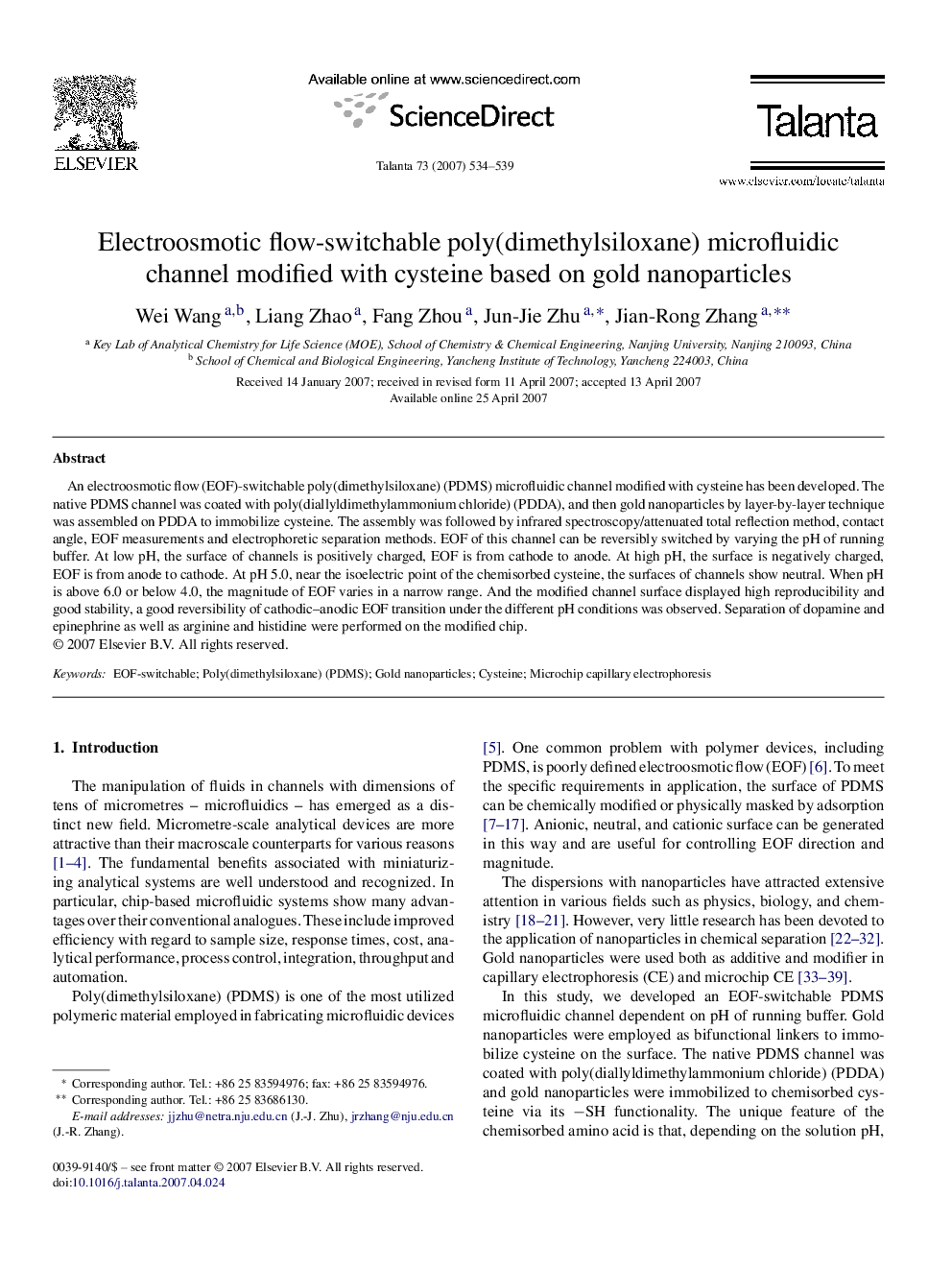| Article ID | Journal | Published Year | Pages | File Type |
|---|---|---|---|---|
| 1247218 | Talanta | 2007 | 6 Pages |
An electroosmotic flow (EOF)-switchable poly(dimethylsiloxane) (PDMS) microfluidic channel modified with cysteine has been developed. The native PDMS channel was coated with poly(diallyldimethylammonium chloride) (PDDA), and then gold nanoparticles by layer-by-layer technique was assembled on PDDA to immobilize cysteine. The assembly was followed by infrared spectroscopy/attenuated total reflection method, contact angle, EOF measurements and electrophoretic separation methods. EOF of this channel can be reversibly switched by varying the pH of running buffer. At low pH, the surface of channels is positively charged, EOF is from cathode to anode. At high pH, the surface is negatively charged, EOF is from anode to cathode. At pH 5.0, near the isoelectric point of the chemisorbed cysteine, the surfaces of channels show neutral. When pH is above 6.0 or below 4.0, the magnitude of EOF varies in a narrow range. And the modified channel surface displayed high reproducibility and good stability, a good reversibility of cathodic–anodic EOF transition under the different pH conditions was observed. Separation of dopamine and epinephrine as well as arginine and histidine were performed on the modified chip.
